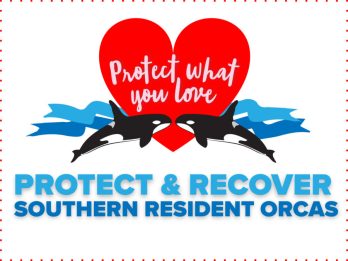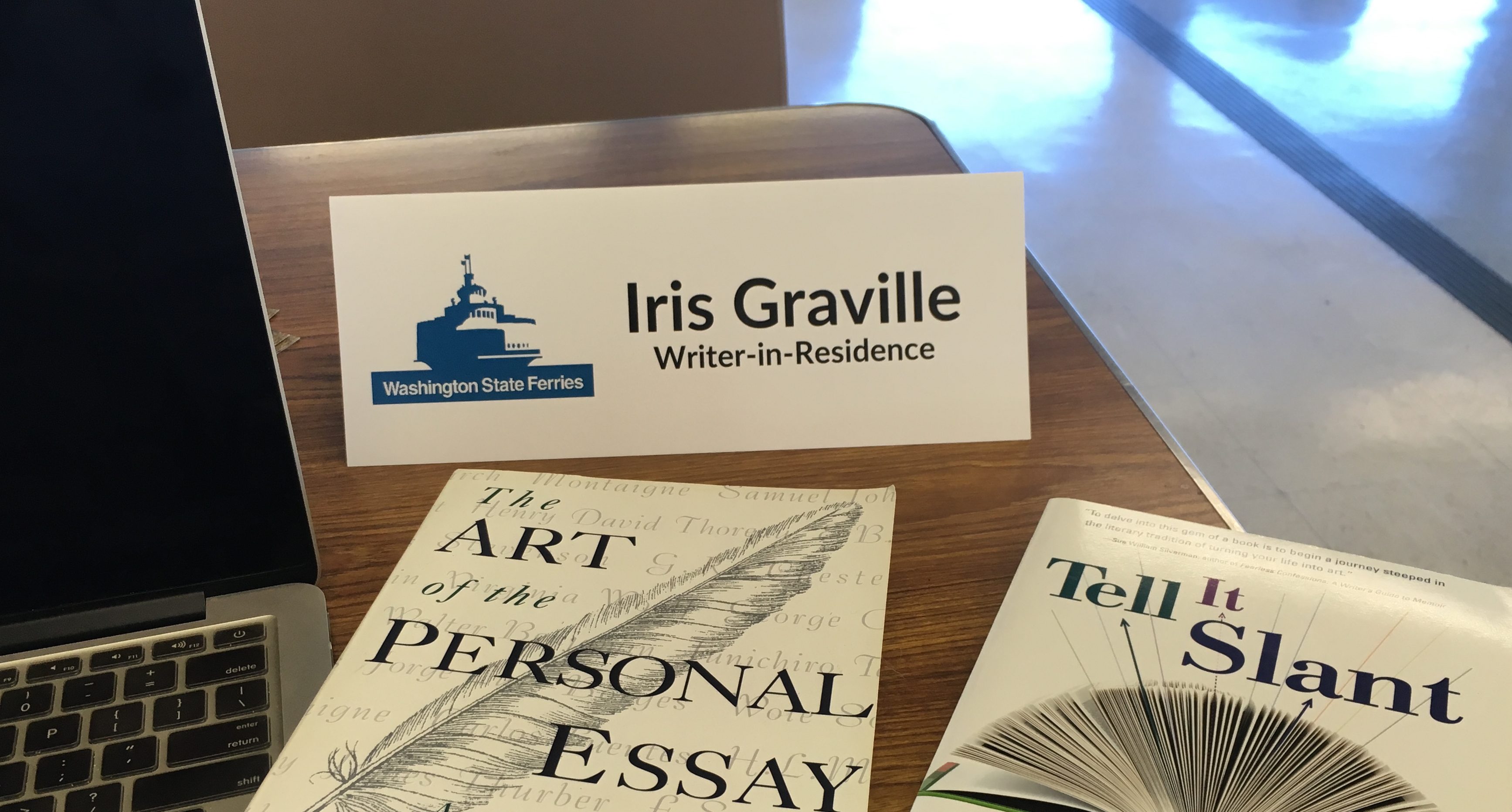
March 18, 2019 – I couldn’t have asked for a more perfect day to ride and write on the M.V. Tillikum. Sunshine, snow-covered Koma Kulshan (Mt. Baker), and water the shade that always comes to mind when I hear the word sea greeted me as I watched the M.V. Yakima sail for Anacortes.
 The Tillikum (“the interisland”) was close behind, and I boarded along with fellow writer, Kathleen Grimbley.
The Tillikum (“the interisland”) was close behind, and I boarded along with fellow writer, Kathleen Grimbley.
What I didn’t know until the next morning was there was some good news about the Southern Resident Killer Whales (orcas) that call the Salish Sea home. MyNorthwest.com reported the newest orca calf (L124, or “Lucky”) was seen by the Center for Whale Research on March 9, along with other whales from L pod, “zig-zagging their way toward Obstruction Pass,” near Washington State’s Orcas Island. As far as I know, this was the first sighting of Lucky since the film below on January 11.
Researchers estimate Lucky was born in late December 2018. In recent years, the majority of orca calves haven’t survived the first year of life, and since a calf’s death last summer just thirty minutes after birth, this recent addition to L pod offers a glimmer of hope.
 It will take much more than hope and “luck” to preserve these endangered whales, though. This week, Friends of the San Juans, a preservation organization, is urging us to “Protect What You Love,” at a series of educational presentations.
It will take much more than hope and “luck” to preserve these endangered whales, though. This week, Friends of the San Juans, a preservation organization, is urging us to “Protect What You Love,” at a series of educational presentations.
I attended today’s session on Lopez Island, and I came away with homework. I have some postcards to write to my state senator and representatives, urging them to support bills to decrease risks to orcas: decreased food supply, noise, and toxic waste.

If you live in Washington and share my concern for orcas (in fact, all life in the Salish Sea), please ask your elected officials to support these bills. And no matter where you live, send good thoughts to Lucky.

Iris, I’m getting an error when I click on your link for Koma Kulshan. I’m always interested in the pre-settler names for our landmarks and special places; I’d like very much to read that if the link is fixable.
LikeLike
Try the link now, Tara. It’s from Wikipedia; the earlier link was from the USDA Forest Service – https://www.fs.usda.gov/detail/mbs/specialplaces/?cid=stelprdb5275892
For some reason, this link isn’t working. Here’s what it says about the origin of the name:
“Mt. Baker has had many names over the centuries. Before the arrival of Europeans, it was known as Koma Kulshan, meaning “Great White Watcher.” The first European name for the volcano comes from the maps of Spanish mariner Gonzalo Lopez de Haro who labeled the mountain “La Gran Montana del Carmelo” in 1790.”
LikeLiked by 1 person
Thank you!
LikeLike
Thank you Iris!
LikeLiked by 1 person
You’re welcome, Carole. Thanks for reading.
LikeLike
Thank you for putting this information out there! I am holding Lucky in the Light! I don’t know if scientists would call orca an “indicator species” for the health of the Puget Sound, but it seems to me that they are in some sense, because, dwelling at the top of the food chain, they tend to get high concentrations of toxins in the water into their bodies. Just as the eagles being endangered by DDT, the orcas being endangered by PCBs tell us we NEED to clean up our mess!! https://www.nationalgeographic.com/environment/2018/09/orcas-killer-whales-poisoned-pcbs-pollution/ And, of course, our resident Souther Orca pods are also endangered by boat noise and disruption of the salmon runs they depend on for food.
LikeLike